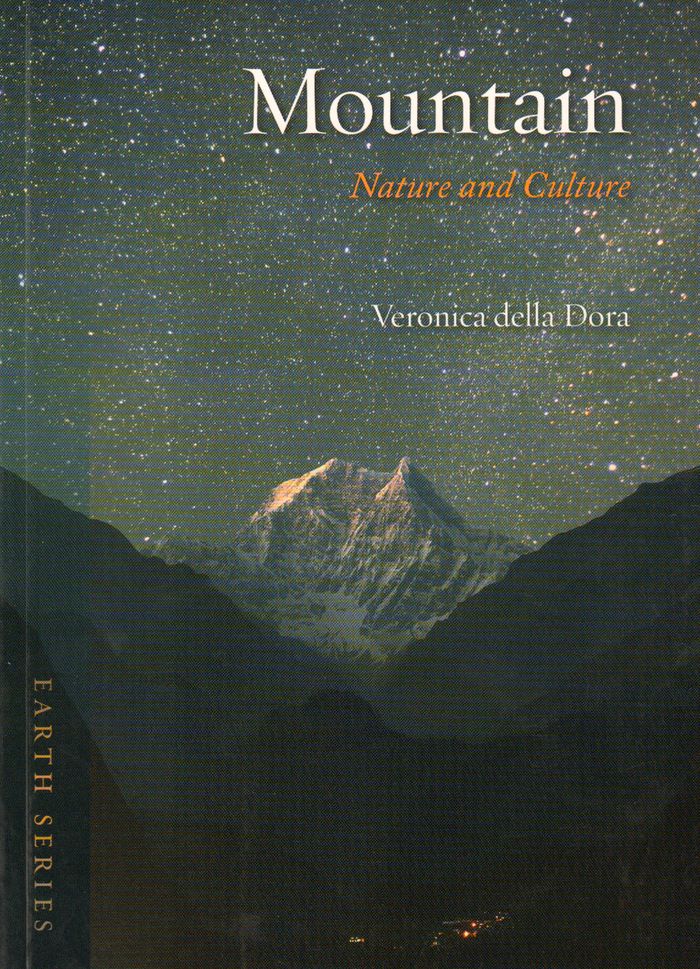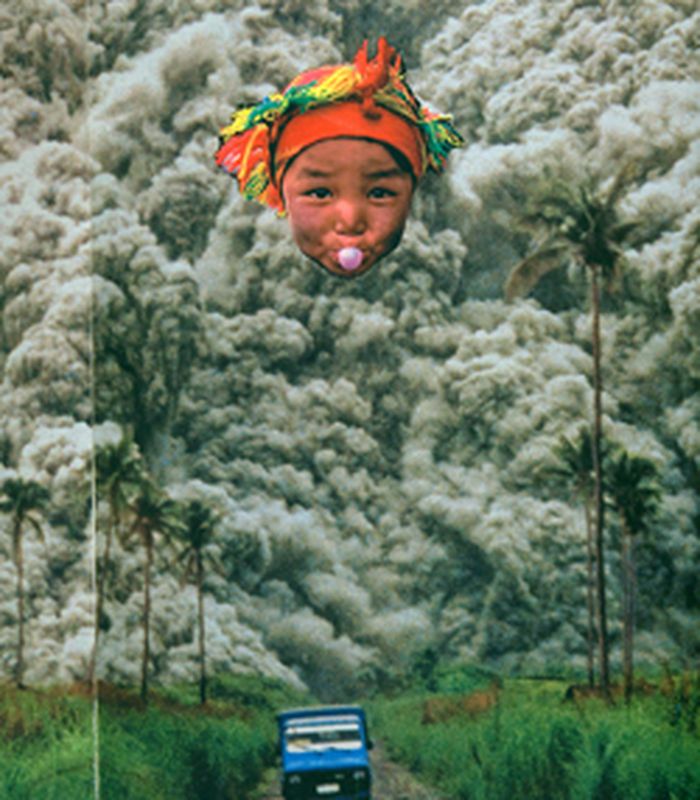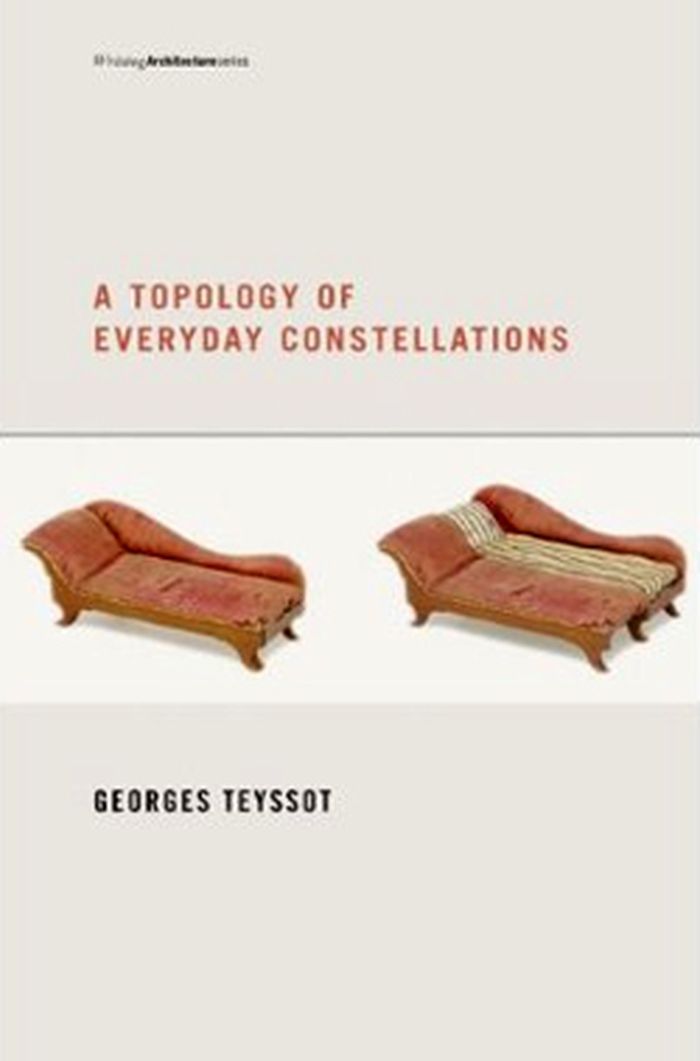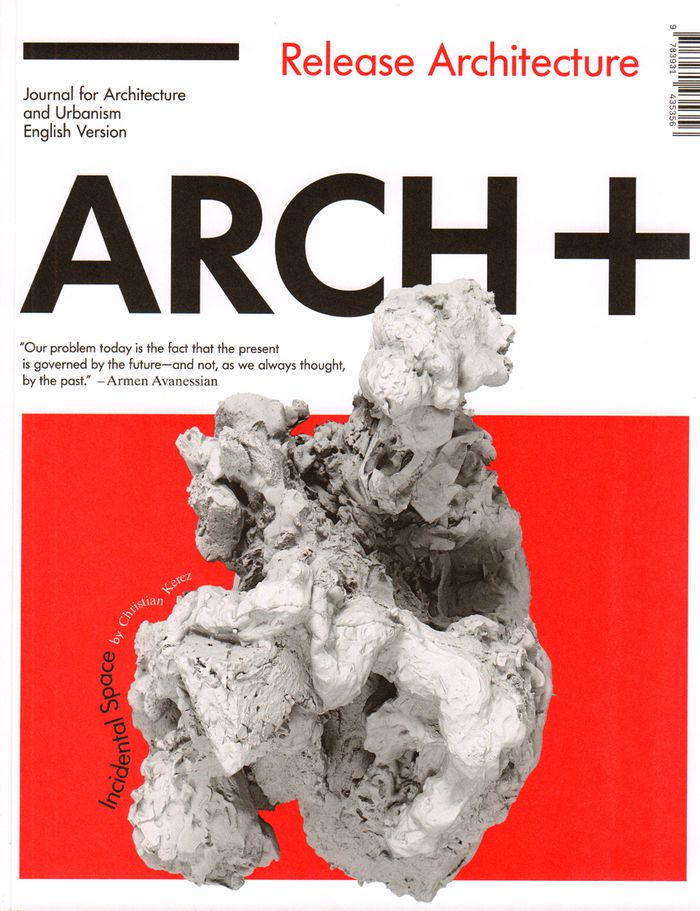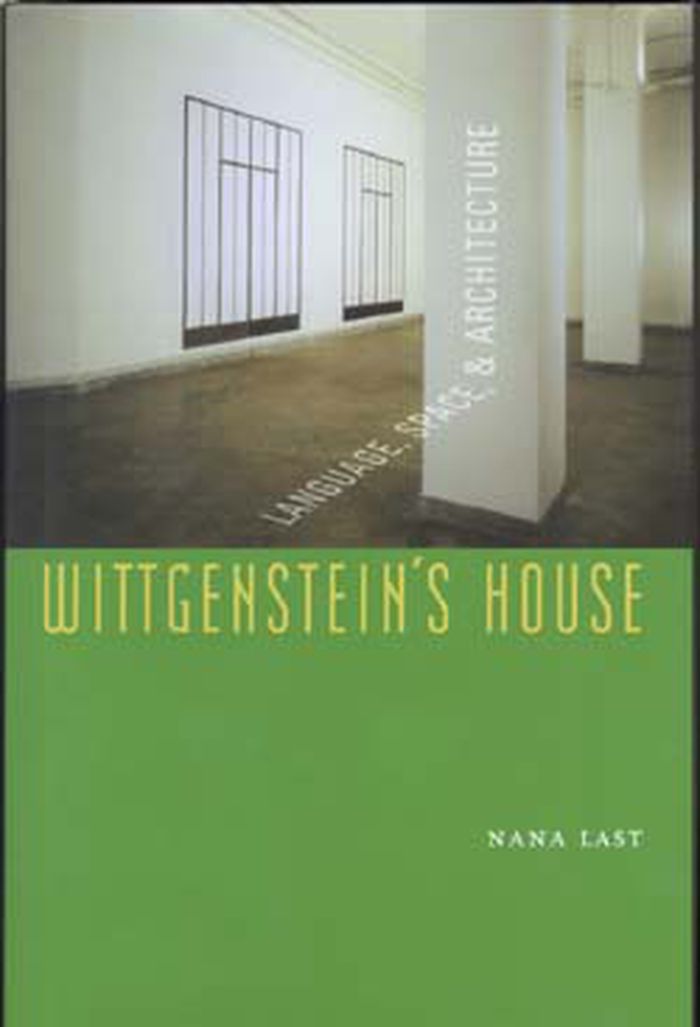Mountain: nature and culture
$35.50
(disponible sur commande)
Résumé:
Majestic and inspiring, there is nothing like the sight of a mountain on the horizon. Throughout all of human history mountains have been linked to the eternal, attracting us to their dizzying heights, stunning us with their natural beauty, and often threatening us with their dangers. Through a compelling journey to both real and imaginary peaks, this book explores how(...)
Mountain: nature and culture
Actions:
Prix:
$35.50
(disponible sur commande)
Résumé:
Majestic and inspiring, there is nothing like the sight of a mountain on the horizon. Throughout all of human history mountains have been linked to the eternal, attracting us to their dizzying heights, stunning us with their natural beauty, and often threatening us with their dangers. Through a compelling journey to both real and imaginary peaks, this book explores how the mountain has figured in our history, culture, and maginations. Veronica della Dora explores the ways mountains have functioned spiritually as a boundary between life and death, a bridge between the earth and the heavens. Interlacing science, culture, and religion, she sketches the mountain as a geological phenomenon that has profoundly influenced and been influenced by the human imagination, shaping our environmental consciousness and helping us understand our—quite small indeed—place in the world. She also explores their significance as objects of human feats, as prizes of adventure and sport, and as places of serene beauty for vacationers. Magnificently illustrated and showcasing famous peaks from all around the world, Mountain offers a fascinating dual portrait of these giants in nature and culture.
Théorie du paysage
$83.95
(disponible sur commande)
Résumé:
First published in 1992 to wide critical acclaim, ''Pictures from home'' is Larry Sultan’s pendant to his parents. Sultan returned home to Southern California periodically in the 1980s and the decade-long sequence moves between registers, combining contemporary photographs with film stills from home movies, fragments of conversation, Sultan’s own writings and other(...)
Larry Sultan: pictures from home
Actions:
Prix:
$83.95
(disponible sur commande)
Résumé:
First published in 1992 to wide critical acclaim, ''Pictures from home'' is Larry Sultan’s pendant to his parents. Sultan returned home to Southern California periodically in the 1980s and the decade-long sequence moves between registers, combining contemporary photographs with film stills from home movies, fragments of conversation, Sultan’s own writings and other memorabilia. The result is a narrative collage in which the boundary between the documentary and the staged becomes increasingly ambiguous. Simultaneously the distance usually maintained between the photographer and his subjects also slips in an exchange of dialogue and emotion that is unique to this work. Significantly increasing the page count of the original book, this MACK design of ''Pictures from home'' clarifies the multiplicity of voices – both textual and pictorial – in order to afford a fresh perspective of this seminal body of work. Emphasising the cinematic motion of the family’s home videos, the Super-8 film stills have been newly digitised and magnified, with select scenes running full-bleed across double-page spreads. Meanwhile, Sultan’s photographs of his parents as they go about their daily lives – against the quintessential backdrop of the Reagan-era American dream – are supplemented with previously unpublished images. Most significantly, the book honours Sultan as the oft-hailed ‘King of Colour Photography’.
Monographies photo
Gabriel Orozco
$66.00
(disponible sur commande)
Résumé:
Gabriel Orozco emerged at the beginning of the 1990s as one of the most intriguing and original artists of his generation. His work is unique in its formal power and intellectual rigor, resisting confinement to one medium and roaming freely and fluently among drawing, photography, sculpture, installation and painting. Orozco deliberately blurs the boundary between the art(...)
Gabriel Orozco
Actions:
Prix:
$66.00
(disponible sur commande)
Résumé:
Gabriel Orozco emerged at the beginning of the 1990s as one of the most intriguing and original artists of his generation. His work is unique in its formal power and intellectual rigor, resisting confinement to one medium and roaming freely and fluently among drawing, photography, sculpture, installation and painting. Orozco deliberately blurs the boundary between the art object and the everyday environment, situating his work in a place that merges art and reality, whether through exquisite drawings made on airplane boarding passes or sculptures composed of recovered trash. This publication examines two decades of the artist's production year by year, from 1989 through 2009. Each section is richly illustrated and includes a short text, based on interviews with the artist, that combines biographical information with a brief and focused discussion of selected works. Critical essays by Ann Temkin, Benjamin H.D. Buchloh and Briony Fer supplement these foundational and chronological explorations, providing new insights and strategies for grounding Orozco's work in the larger landscape of contemporary art production.
$39.95
(disponible sur commande)
Résumé:
Today, spaces no longer represent a bourgeois haven; nor are they the sites of a classical harmony between work and leisure, private and public, the local and the global. The house is not merely a home but a position for negotiations with multiple spheres — the technological as well as the physical and the psychological. In A Topology of Everyday Constellations, Georges(...)
A topology of everyday constellations
Actions:
Prix:
$39.95
(disponible sur commande)
Résumé:
Today, spaces no longer represent a bourgeois haven; nor are they the sites of a classical harmony between work and leisure, private and public, the local and the global. The house is not merely a home but a position for negotiations with multiple spheres — the technological as well as the physical and the psychological. In A Topology of Everyday Constellations, Georges Teyssot considers the intrusion of the public sphere into private space, and the blurring of notions of interior, privacy, and intimacy in our societies. He proposes that we rethink design in terms of a new definition of the practices of everyday life. Teyssot considers the door, the window, the mirror, and the screen as thresholds or interstitial spaces that divide the world in two: the outside and the inside. Thresholds, he suggests, work both as markers of boundaries and as bridges to the exterior. The stark choice between boundary and bridge creates a middle space, an in-between that holds the possibility of exchanges and encounters. If the threshold no longer separates public from private, and if we can no longer think of the house as a bastion of privacy, Teyssot asks, does the body still inhabit the house — or does the house, evolving into a series of microdevices, inhabit the body?
Théorie de l’architecture
livres
$54.95
(disponible sur commande)
Résumé:
This imaginative study of American visual culture reveals how the political predicaments of a few small bureaucracies once fostered pictures of an extraordinary style. U.S. geographical and geological surveys of the late nineteenth century produced photographs and drawings of topography, American Indians, geologic features, botanical specimens, and specialists at work in(...)
Théorie de la photographie
juin 2007, Berkeley, Los Angeles, London
Archive style : photographs & illustrations for U.S. surveys, 1850-1890
Actions:
Prix:
$54.95
(disponible sur commande)
Résumé:
This imaginative study of American visual culture reveals how the political predicaments of a few small bureaucracies once fostered pictures of an extraordinary style. U.S. geographical and geological surveys of the late nineteenth century produced photographs and drawings of topography, American Indians, geologic features, botanical specimens, and specialists at work in the field. Some of these pictures have long been celebrated for their anticipation of a modernist aesthetic, but Robin Kelsey, in this abundantly illustrated volume, traces their modernistic qualities to archival ingenuity. The technical and promotional needs of surveys, Kelsey argues, fostered the emergence of a taut, graphic pictorial style that imitated the informational clarity of diagrams and maps. As this book demonstrates, these pictures became sites of struggle as well as innovation when three brilliant survey artists and photographers subtly resisted the programs they were hired to serve. Discovering a politics of style behind the modernist look of survey pictures, Kelsey offers a fresh interpretation of canonical western expedition photographs by Timothy H. O'Sullivan and introduces two exceptional but largely forgotten sets of pictures: views of the U.S.-Mexico boundary from the 1850s by Arthur Schott and photographs of the Charleston earthquake of 1886 by C. C. Jones.
livres
juin 2007, Berkeley, Los Angeles, London
Théorie de la photographie
Release architecture
$39.95
(disponible en magasin)
Résumé:
An architecture biennale can be more than a place to simply represent and celebrate the status quo in architectural production. Exhibitions are increasingly becoming a place for researching and producing an experimental and critical architectural practice: a place not for the presentation of finished products, but for the production of content. This calls into question(...)
Release architecture
Actions:
Prix:
$39.95
(disponible en magasin)
Résumé:
An architecture biennale can be more than a place to simply represent and celebrate the status quo in architectural production. Exhibitions are increasingly becoming a place for researching and producing an experimental and critical architectural practice: a place not for the presentation of finished products, but for the production of content. This calls into question the supposed boundary between architecture and exhibition. Inquiry becomes a form of display. Christian Kerez’s Incidental Space, exhibited in the Swiss Pavilion at the 2016 Architecture Biennale in Venice, attempts to inquire into the outer limits of what can be achieved in architecture today—in terms of both technical feasibility and the limits of our own imagination. How can you use the medium of architecture to contemplate an architectural space that is entirely abstract and as complex as possible? How could this kind of imaginary space even be visualized, and how could it be produced? Conceived in close collaboration with Sandra Oehy, the curator of the Swiss Pavilion, and Christian Kerez, the Swiss Pavilion architect, this issue of ARCH+ delves into the questions posed by Kerez’s “speculative space.” Contributors like Philip Ursprung, Mario Carpo, Armen Avanessian, and Timothy Morton consider how the object stands in relation to the subject in a world where the capacity for technological and digital reproduction increasingly renders the distinction between depiction and reality moot. Where is the space for architectural autonomy in this? How can we “Release Architecture”? A report from architecture’s speculative front.
Revues
livres
$56.95
(disponible sur commande)
Résumé:
Although both are central to architecture, siting and construction are often treated as separate domains. In "Uncommon Ground", David Leatherbarrow illuminates their relationship, focusing on the years between 1930 and 1960, when utopian ideas about the role of technology in (...)
Théorie de l’architecture
octobre 2000, Cambridge, Mass.
Uncommon ground : architecture, technology, and topography
Actions:
Prix:
$56.95
(disponible sur commande)
Résumé:
Although both are central to architecture, siting and construction are often treated as separate domains. In "Uncommon Ground", David Leatherbarrow illuminates their relationship, focusing on the years between 1930 and 1960, when utopian ideas about the role of technology in building gave way to an awareness of its disruptive impact on cities and culture. He examines the work of three architects, Richard Neutra, Antonin Raymond, and Aris Konstantinidis, who practiced in the United States, Japan, and Greece respectively. Leatherbarrow rejects the assumption that buildings of the modern period, particularly those that used the latest technology, were designed without regard to their surroundings. Although the prefabricated elements used in the buildings were designed independent of siting considerations, architects used these elements to modulate the environment. Leatherbarrow shows how the role of walls, the traditional element of architectural definition and platform partition, became less significant than that of the platforms themselves, the floors, ceilings, and intermediate levels. He shows how frontality was replaced by the building's four-sided extension into its surroundings, resulting in frontal configurations previously characteristic of the back. Arguing that the boundary between inside and outside was radically redefined, Leatherbarrow challenges cherished notions about the autonomy of the architectural object and about regional coherence. Modern architectural topography, he suggests, is an interplay of buildings, landscapes, and cities, as well as the humans who use them. The conflict between technological progress and cultural continuity, Leatherbarrow claims, exists only in theory, not in the real world of architecture. He argues that the act of building is not a matter of restoring regional identity by re-creating familiar signs, but of incorporating construction into the process of topography's perpetual becoming.
livres
octobre 2000, Cambridge, Mass.
Théorie de l’architecture
$60.00
(disponible sur commande)
Résumé:
Wittgenstein's House reads Wittgenstein's his two main philosophical texts, Tractatus Logico-Philosophicus and Philosophical Investigations, in relation to an experience that intervened between them: his design and construction of the Stonborough-Wittgenstein house in Vienna. Arguing that the practice of architecture occupies not just a historical position between(...)
Wittgenstein's house: language, space, & architecture
Actions:
Prix:
$60.00
(disponible sur commande)
Résumé:
Wittgenstein's House reads Wittgenstein's his two main philosophical texts, Tractatus Logico-Philosophicus and Philosophical Investigations, in relation to an experience that intervened between them: his design and construction of the Stonborough-Wittgenstein house in Vienna. Arguing that the practice of architecture occupies not just a historical position between Wittgenstein's early and late philosophy, but a conceptual position as well, the book demonstrates that Wittgenstein's practice of architecture constitutes a fundamental component in the development of his philosophy of language from its early to late phases. The book advances the radical proposition that the field in which architecture and philosophy operate includes linguistic and spatial practices. It develops innovative forms of interdisciplinary analyses to demonstrate that the philosophical positions put forth by Wittgenstein's two main works are literally unthinkable outside of their respective conceptions of space: the view from above in the early work and the view from within constructed by the late work. To examine the manner in which Wittgenstein's practice of architecture insinuated itself into his philosophy, the author interweaves in-depth analyses of the spatial constructs underpinning the early and late philosophies with conceptual, formal and operative discussions of the design of the Stonborough-Wittgenstein house. Together these discussions reveal how Wittgenstein's practice of architecture engaged philosophical concepts, through which it influenced Wittgenstein's philosophy of language. At the heart of this approach is the finding that the philosophical concepts at the core of Wittgenstein's philosophy areindeed spatial ones, including his concerns with the limits of language, the boundary between showing and saying, the intricate textual numbering systems he devises, the relationship between the interiority of the subject and the publicness of language, and the formative principle of family resemblance.
Théorie de l’architecture
$79.95
(disponible sur commande)
Résumé:
Although both are central to architecture, siting and construction are often treated as separate domains. In "Uncommon Ground", David Leatherbarrow illuminates their relationship, focusing on the years between 1930 and 1960, when utopian ideas about the role of technology in (...)
Théorie de l’architecture
mai 2002, Cambridge, Mass.
Uncommon ground : architecture, technology. and topography
Actions:
Prix:
$79.95
(disponible sur commande)
Résumé:
Although both are central to architecture, siting and construction are often treated as separate domains. In "Uncommon Ground", David Leatherbarrow illuminates their relationship, focusing on the years between 1930 and 1960, when utopian ideas about the role of technology in building gave way to an awareness of its disruptive impact on cities and culture. He examines the work of three architects, Richard Neutra, Antonin Raymond, and Aris Konstantinidis, who practiced in the United States, Japan, and Greece respectively. Leatherbarrow rejects the assumption that buildings of the modern period, particularly those that used the latest technology, were designed without regard to their surroundings. Although the prefabricated elements used in the buildings were designed independent of siting considerations, architects used these elements to modulate the environment. Leatherbarrow shows how the role of walls, the traditional element of architectural definition and platform partition, became less significant than that of the platforms themselves, the floors, ceilings, and intermediate levels. He shows how frontality was replaced by the building's four-sided extension into its surroundings, resulting in frontal configurations previously characteristic of the back. Arguing that the boundary between inside and outside was radically redefined, Leatherbarrow challenges cherished notions about the autonomy of the architectural object and about regional coherence. Modern architectural topography, he suggests, is an interplay of buildings, landscapes, and cities, as well as the humans who use them. The conflict between technological progress and cultural continuity, Leatherbarrow claims, exists only in theory, not in the real world of architecture. He argues that the act of building is not a matter of restoring regional identity by re-creating familiar signs, but of incorporating construction into the process of topography's perpetual becoming.
Théorie de l’architecture
livres
$120.00
(disponible sur commande)
Résumé:
Whether from military necessity or unbridled curiosity, mapmakers since early antiquity have attempted to represent the configuration of the land about them. The Greeks paid homage to the landscape and struck its image on their coins. Medieval scholars viewed the (...)
Dessin d’architecture
octobre 1999, New York
Infinite perspectives : two thousand years of three-dimensional mapmaking
Actions:
Prix:
$120.00
(disponible sur commande)
Résumé:
Whether from military necessity or unbridled curiosity, mapmakers since early antiquity have attempted to represent the configuration of the land about them. The Greeks paid homage to the landscape and struck its image on their coins. Medieval scholars viewed the highest elevations as a boundary between the physical and the spiritual; the images they created of their sacred shrines and historic sites were drawn atop simple caricatures of mountains. Leonardo da Vinci's maps of Tuscany and other more realistic representations of landforms appeared during the Renaissance, thanks to a wealth of scientific study and new artistic methods. In the modern era, new techniques were invented as attempts to portray the three-dimensional world on a flat surface became more sophisticated. Hachuring, a system that involves shading with fine parallel or crossed lines, was developed with the use of copper plates; contour lines slowly replaced this technique in the nineteenth century. Lithography allowed for the introduction of color to the printing process, and multi-color tints were used to impart a sense of elevation. Aerial and satellite photography and the dawn of the digital era have yielded maps of unprecedented realism; today's computer technology allows planetary surfaces to be portrayed in three dimensions with a precision unimaginable to previous generations of mapmakers. "Infinite Perspectives" traces the artistic and scientific evolution of topographic representation from its origins to the present. Over 80 colour plates of some of the most significant maps ever made detail important advances in the portrayal of three dimensions in map form. The final section of the book contains 20 plates presenting a revolutionary cartographic technique that allows viewers wearing ordinary 3D glasses to view planetary surfaces without distortion. This invention, developed by the authors with Dr. Russell Ambroziak and named Infinite Perspective Projection, is currently in use by NASA and the Department of Defense. Included are maps of Mars, the Grand Canyon, and Mount McKinley, as well as one large fold-out map, suitable for framing; two pairs of the necessary 3D viewing glasses are also provided.
livres
octobre 1999, New York
Dessin d’architecture
